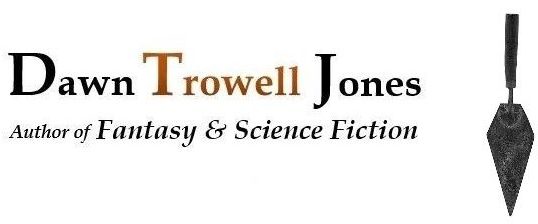 What a gorgeous day. We’ve got the windows open. It’s sunny. There’s a nice breeze.
What a gorgeous day. We’ve got the windows open. It’s sunny. There’s a nice breeze.
I feel a bit out of sorts after my little break. Much has happened over the past few months—a pandemic loosening its grip, visiting my mother and sister again after more than a year, two writers conferences, and two formal pitches for I’m Your Goat, both successful, I’m happy to say. What else? Round One of queries has been sent out.
A couple of nights ago, my husband and I watched Tenet (spoiler alert!), a movie we’d been looking forward to for over a year. When I first heard about the movie, I didn’t put together the source of the word “tenet,” which turns out to be the Sator Rotas acrostic poem. I was alarmed because it plays a role in my new novel, and afraid that this was one of those moments when an idea’s time has come. That happens, especially to new writers clamoring for agent attention. The process takes time. Anyway, false alarm. The movie uses it differently. But similarities don’t always create problems. As an example, quite a few of Yuval Harari’s observations in Homo Deus: A Brief History of Tomorrow fit in quite nicely with I’m Your Goat’s world—and that delights me to no end. In fact, I was introduced to Harari when a beta reader told me my novel reminded him of Harari’s Sapiens: A Brief History of Humankind. (I mentioned the recommendation in my last post, but forgot the why.)
 Tenet does not discuss the meaning of the Sator Rotas poem itself, which has been debated for centuries, and believe me, I’ve taken it about as far as I can in a short novel not “about” the poem. The movie isn’t “about” the Sator Rotas, either. It’s a time travel story, and I do not love time travel stories. The last one I read was This is How You Lose the Time War (2019) by Amal El-Mohtar and Max Gladstone, which had a certain appeal, I admit, but it got too bogged down in its premise, in spite of the lovely poetry of its prose. Though Tenet offers a degree of sophistication with its limited temporal flow concept, there were inconsistencies out the wazoo. It overwhelmed with convolutions, and in doing so, it managed to force me to suspend disbelief for most of the movie, great, but before the end, I wanted to throw up my hands. Too much work, and once I had a chance to catch my breath, I found the whole premise utterly implausible on its face.
Tenet does not discuss the meaning of the Sator Rotas poem itself, which has been debated for centuries, and believe me, I’ve taken it about as far as I can in a short novel not “about” the poem. The movie isn’t “about” the Sator Rotas, either. It’s a time travel story, and I do not love time travel stories. The last one I read was This is How You Lose the Time War (2019) by Amal El-Mohtar and Max Gladstone, which had a certain appeal, I admit, but it got too bogged down in its premise, in spite of the lovely poetry of its prose. Though Tenet offers a degree of sophistication with its limited temporal flow concept, there were inconsistencies out the wazoo. It overwhelmed with convolutions, and in doing so, it managed to force me to suspend disbelief for most of the movie, great, but before the end, I wanted to throw up my hands. Too much work, and once I had a chance to catch my breath, I found the whole premise utterly implausible on its face.
And yet! Once I let go, I actually got some enjoyment out of the story. The acting was quite good. The protagonist portrayed an especially convincing CIA agent, in a nuanced way. That’s rare—I used to be a big spy novel reader and had an uncle in the CIA, for what it’s worth. Was the movie worth two and half hours? Sure. I had some fun. Will I watch it again to be sure I’m right that they forgot to keep track of who was moving forward in time and who was moving backward when the protagonist, Neil, and Kat return to the airport switcheroo device before it’s blown? Or to understand better how, if they didn’t all go back through, they were able to interact with one another and people flowing normally, at all? Probably not. As I said, the premise is problematic on its face.
Why is it problematic? First of all: time travel story. When I think of time travel, the crawling-over-the-ground scene in the movie Looper (2012) comes to mind; I had a hard time making that character’s piecemeal dismemberment fit into the story as given to me, and the scene was so disturbing, I couldn’t stop mulling over it. In Tenet, as I understood the explanation given to the protagonist, an organization named Tenet is trying to prevent people belonging to the future from colonizing the past. These people are trying to reverse the flow of Earth’s time—for them alone—because the planet’s resources in their time have been hopelessly depleted. They can move backward relative to everyone else (starting in their time), but they personally experience time moving forward. Entropy, however, runs backward for them. For instance, fire has the opposite effect: it freezes. Objects like guns and bullets maintain their own time flow, backward or forward, rather than syncing up with whatever localized field of time flow they encounter, such as what might surround the people going backward. This means that those going backward have to prepare their air or they can’t breathe. Okay. Fine. So how do they eat, or any of the other necessary bodily processes? That doesn’t make for pleasant viewing, I suppose, so the film doesn’t go into it. But never mind that—if the bad guys succeed in doing what they want to do, they will instantly add their numbers to the planet’s population, and if they can procreate (big “if”), they will add even more people to the planet’s population going backward, all the while eating and burning fuel from those precious resources in the past—in addition to everyone that preceded them doing it. So, the resources get depleted twice as fast? Good thing the grandfather paradox doesn’t apply. Seriously, how could they make use of fuel, if entropy runs backward for them? Passively? I do not know.
I don’t mind inter-dimensional travel as much as time travel, although astrophysicist Sara Seager says (can’t remember where, but love seeing her) that no one can really travel “into” another dimension; a dimension is not a place. But maybe we can call travel between parallel universes “inter-dimensional” for convenience’s sake. The most fun I remember having with one of those types of stories was The Fold (2015) by Peter Clines. Recently, I’ve been wondering if a parallel multiverse theory might even make sense of the principle of uncertainty and how observation affects outcome regardless of when the observation takes place in time. My money’s on unstable universes spontaneously popping into existence and collapsing at a scale too small and too brief for us to perceive—at present. The result would be one timeline, one outcome, where the probabilistic nature of the timeline we actually live in, if visible, might look like a length of frayed yarn, with tiny strands leading off, going nowhere. Those frayed strands would represent the alternate paths not “settled” by observation, little unstable mini-universes, which in their brief time might even “resemble” quantum particles moving backward in time. Meanwhile, we “experience” the yarn as a smooth uniformity going only in one direction. How’s that for a little armchair speculation? No time travel! No!
I’m awful. One sci-fi fan’s pseudoscience is another’s cool idea. At least a little plausibility is all I need to enjoy the science of science fiction, that’s it, but as Arthur C. Clarke’s maxim on scientific progress states that science sufficiently advanced will appear like magic to the uninitiated. I recently read The Three-body Problem (2007) by prominent Chinese author Cixin Liu (translated by Ken Liu), a moving story with interesting and plausible hard science, and yet, there are aspects to Liu’s science (e.g., the flexi-dimensional Sophon) that fully meet the science-that-looks-like-magic standard. I loved this book. The Three-body Problem never violates its own rules, near as I can tell, and internal consistency is important for plausibility, but technically, it did look like they might have had a four-body problem, not three. (Couldn’t resist.)
That’s it for me today. Until next month, take care. I’ll try to do the same.

